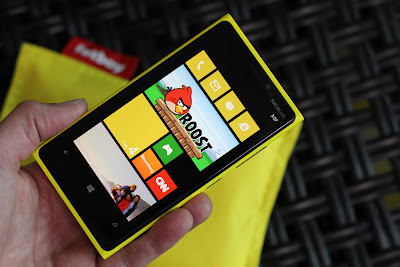
Nokia’s new Windows Phone 8 handsets will arrive on shelves with some highly appealing features packed inside, including support for wireless charging.
The upcoming Nokia Lumia 920 and Lumia 820 are the first devices from the company to provide users with support for wireless charging, which should make the use of the phone far easier than before. “All you have to do is place your phone onto a Nokia Wireless Charging Plate, Nokia Wireless Charging Pillow by Fatboy, Nokia Wireless Charging Stand, or even the JBL PowerUp Wireless Charging Speaker for Nokia to begin the charging process,” the company explains in a blog post. For those out of the loop, we should note that wireless charging means that energy is transmitted...



 10/02/2012 07:29:00 PM
10/02/2012 07:29:00 PM
 dannzfay
dannzfay




















